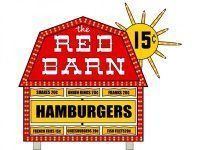Former type State incorporated | Defunct 1986 | |
 | ||
Industry Fast food chain restaurants Fate Franchise licenses were allowed to expire and stores were closed. Number of locations Founded 1961, Dayton, Ohio, United States Headquarters Dayton, Ohio, United States Founders Martin Levine, Don Six, Jim Kirsch | ||
The Red Barn restaurant was a fast-food restaurant chain founded in 1961 in Springfield, Ohio, by Don Six, Martin Levine, and Jim Kirsch. In 1963, the small chain was purchased by Richard O. Kearns, and the offices moved briefly to Dayton, Ohio, followed by a move in August 1964 to Fort Lauderdale, Florida. In the late 1960s, Servomation bought the company. The new parent company itself was bought by Motel 6 in the late 1970s. Only interested in the core business of Servomation, the new owners ceased advertising for the chain and the franchise leases were allowed to expire, with the last of the leases expiring around 1986. At its peak, Red Barn had 300-400 restaurants in 19 states, as well as outlets in southern Ontario, elsewhere in Canada, and Australia.
Contents
Following the shutdown of operations, most of the Red Barn buildings were converted for other uses. A few of the chain restaurants were renamed "The Farm" in various states and continued serving the same menu items available when they were under their Red Barn franchise. There were two locations under "The Farm" name in Racine, Wisconsin and Bradford, Pennsylvania that are serving the same menu items. The Bradford location closed for a brief period in 2014 from a small fire.
Currently, the Racine, Wisconsin is the only location that is still operating. The Bradford, Pennsylvania location closed its store in December of 2015.
Building style
Originally, the Red Barn restaurants were in the shape of barns with a glass front and limited seating. The design of the building was patented in 1962 by Red Barn Systems, Incorporated of Springfield, Ohio, which granted the franchise licenses. Later buildings had the familiar fast-food style mansard roof which allowed them to comply to more local building codes.
Menu items
Some of the most popular items on Red Barn's menu were the "Big Barney" (a hamburger similar to a Big Mac) and the "Barnbuster" (similar to a Quarter Pounder or Whopper.)
The chain was quite forward-looking with their food choices: the Big Barney predated the Big Mac by a few years, and it was the first chain to have self-service salad bars. Chicken and fish were fried in pure vegetable oil (in dedicated fryers); French fries and onion rings were fried in a 60% vegetable oil, 40% lard mix for extra flavor.
Advertising and promotions
The restaurant chain had a TV commercial jingle whose lyrics were: "When the hungries hit / When the hungries hit / Hit the Red Barn." Three mascots were used in the franchise's commercials: "Hamburger Hungry" (a humanoid figure with a hamburger in bun for a head); "Fried Chicken Hungry" (a chicken leg); and "Big Fish Hungry" (a blue fish.)
In Canada, Red Barney the clown opened all new franchises in southern Ontario. He did commercials, went on children's shows, visited sick children in hospitals and even served as guest ringmaster for Ringling Brothers, Barnum and Bailey circus in a Detroit show.
In Australia, the appearance of Red Barney was common on Cartoon Corner with Daryl Somers. He was an affable clown who gave away prizes and preceded Ronald McDonald.
The restaurants had coloring books, crayons, and iron-ons for kids, and they also gave away a free glass with a meal. The food was served in cardboard barn-shaped boxes.
In the Spring of 1970, the chain found itself at the center of controversy when a franchisee wanted to erect a store in Dinkytown, a neighborhood adjacent to the University of Minnesota-East Bank campus in Minneapolis MN. Protestors, who were already riding a wave of anti-corporatism, as well as an anti-Vietnam war sentiment, occupied a vacant building on the property in which the Red Barn franchisee owned. The franchisee eventually demolished the building; however, the restaurant was never built, and the property was later sold off.
